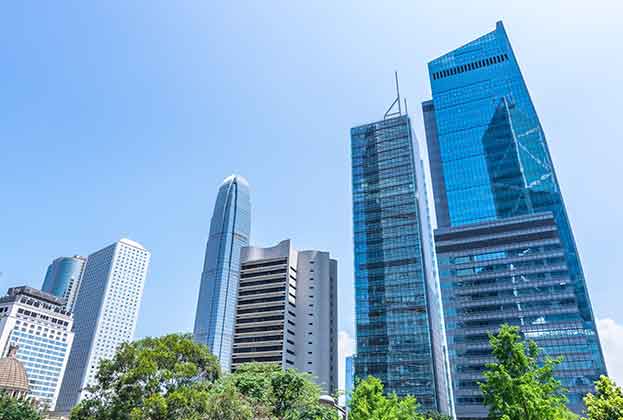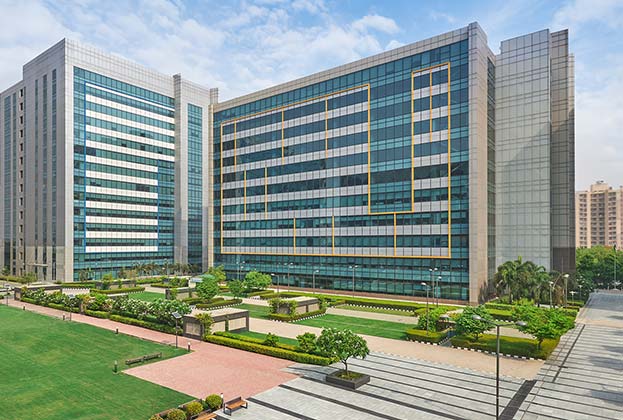The logistics market can be characterised as one of long-term gain, short-term pain
Investors continue to back the structural drivers around e-commerce and evolving supply chains. But uncertainty in the economic environment and future path of interest rates is encouraging caution in the short term. Not so long ago, investors would pick up any shed they could get their hands on, but now the definition of prime is being squeezed by a shrinking pool of active buyers.
Nearly US$40 billion of logistics transactions completed in the third quarter of this year, representing a 40% decline on Q3 2022. Year-to-date, total investment of US$130 billion is 43% down on the same period last year. However, comparisons with 2022 are distorted by base effects, following a two-year investment boom. Instead, total investment this year has broadly returned to 2019 levels, although when comparing the number of individual properties transacted, activity is down by around 10% in comparison with 2019, given recent growth in capital values.
Prime yields continued to shift outwards this quarter, by 25 bps in all US markets, and by 10–25 bps across the EMEA markets covered. Nevertheless, a sharp rise in global bond yields further compressed risk premiums in the quarter (i.e., the spread between prime yields and the prevailing risk-free rate of return), and we see upward pressure on yields in all markets except Dubai, Singapore, and Tokyo (of which all continue to deliver solid cash-on-cash returns to investors). Increasingly, we are likely to see more motivated sellers in the market, which should support the correction.
Transitory inflation Higher for longer
With transitory inflation now behind us, ‘higher for longer’ is the new slogan doing the rounds, summarising the outlook for the future path of policy rates. Central banks have gone to great lengths to convince markets that they are not cutting soon. Forward guidance has taken a hit in recent times, but this proves that central bankers still hold sway over the market (don’t bet against the Fed!). By convincing investors that rates will remain elevated, global bond yields have continued to rise in recent months, with the 10-year US Treasury briefly pushing past 5% in mid-October.
The question is whether higher for longer ultimately proves transitory (cue narrative klaxon!). History suggests it will; in the past 30+ years, the US Fed has typically held out for just six months before cutting rates again. Given they last raised rates in July, this would imply a rate cut at their first soirée next year. And yet, markets are currently pricing a 99% probability that the Fed Funds rate is at or above current levels following the January 2024 meeting.
Markets are nearly always wrong, but a fast about-turn is predicated on something going bang in the global economy, fundamentally shifting the narrative on growth and inflation. The proposition that ‘the Fed hikes until something breaks’ is grounded in fact; financial crises often follow rapid monetary policy tightening cycles. Investors want lower interest rates, but higher for longer is inextricably linked to a soft landing, so it’s a case of be careful what you wish for.
The good news then is that, in their recent forecast update, the IMF declared that the ‘likelihood of a soft landing has increased.’ Those expecting a more severe downturn in the global economy are using more intuition than fact to form their opinion; a soft landing in the global economy is the right call, conditioned on what we know today. Households, corporations, and the transparent parts of the financial system are generally in good financial health, able to weather the higher rate environment. Labour markets are showing few signs of rolling over, and real wage growth should support household consumption.
Tomorrow is another day
There are, however, plenty of vulnerabilities in the global economy right now: the property market in China, conflict in Ukraine and the Middle East, concerns over the US regional banking sector, etc. Given the historical context, we are perhaps embarking on a period of peak anxiety that makes it very difficult for investors to make long-term decisions. This is reflected in public markets, with the VIX index of equity market volatility in the US up from mid-year lows.

Follow my deed
Even a soft landing may not be the fillip that real estate investors want; a global economy that is ‘limping along’ in the words of the IMF does not provide much comfort. If investors follow the occupiers, then weak global demand is not necessarily an environment that will support strong leasing and rents. Global manufacturing has been in recession for a while now, underpinned by a rotation in consumer demand away from goods to services. Retail sales are struggling in most markets, except in the US, where consumer spending has defied expectations of a slowdown (but for how long?). Global trade volumes are also in decline, hitting cargo levels at some of the major global ports that support some of the largest logistics markets.
This is already feeding into occupational demand. In the US, leasing activity is down by around 25% year-to-date, with the vacancy rate rising by as much as 150 bps over the last year, with new supply hitting the market at the wrong time. The European leasing market is also slowing, with take-up down by approximately 29% y/y so far this year. Japan, like the US, is struggling to absorb a glut of new supply, with Tokyo welcoming a record 47.4 million sq ft of new logistics stock this year. With vacancy rising above 6% this quarter (up 300 bps on the year), rents are down by 3.4% y/y in the capital city.
The prevailing narrative remains one of a normalising market that is still supported by longer-term structural tailwinds
Oliver Salmon, Global Capital Markets Researcher, World Research
However, base effects are important to consider in the logistics market, with both occupational and investment activity on somewhat of a comedown from the last two years. Comparisons with 2019 are probably more appropriate, being the last ‘normal’ year to benchmark activity levels, and providing a more balanced perspective. US leasing activity is stable when compared with 2019, while European take-up is 20% higher. In Asia Pacific, investment volumes year-to-date are up by 19% on the pre-pandemic benchmark.
This is not to say that the sector does not face some challenges: on the occupational side, for example, from too much supply onboarding and softer demand, and on the capital markets side, from the high cost of borrowing. But the prevailing narrative remains one of a normalising market that is still supported by longer-term structural tailwinds.

Key transactions
Methodology
Net initial yields are estimated by local Savills experts to represent the achievable yield, including transaction and non-recoverable costs, on a hypothetical Grade A logistics facility located in a prime location, fully let at the market rental value to a strong covenant tenant on a 10–15-year lease with open market rent reviews. The typical LTV and cost of debt represent the anticipated competitive lending terms available in each market. Cash-on-cash returns illustrate the initial yield on equity, assuming the aforementioned LTV and debt costs. The risk premium is calculated by subtracting the end-of-period domestic ten-year government bond yield (as a proxy for the relevant risk-free rate of return) from the net initial yield. Data is end-of-quarter values.
Read the articles within Taking Stock: Capital Markets Quarterly – Q3 2023 below.





.jpg)
